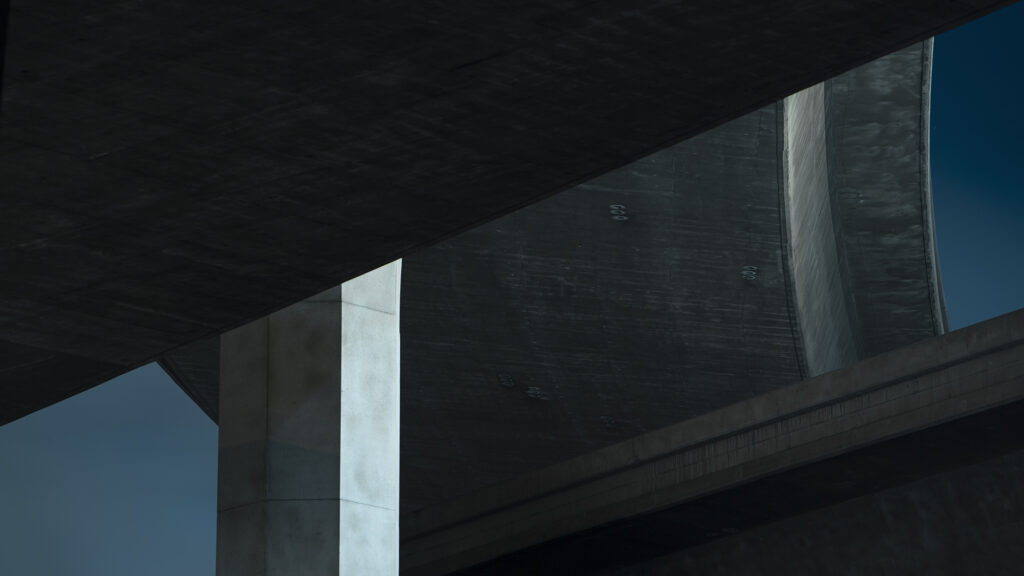Monuments
“The dictatorship of the automobile—the pilot product of the first stage of commodity abundance—has left its mark on the landscape with the dominance of freeways, which tear up the old urban centers and promote an ever-wider dispersal.”
Guy Debord, The Society of the Spectacle
Monuments show a world that seems alien, although they spring from the most common experience one can have in Southern California: driving a car. These infrastructures of speed and power form gigantic concrete layers that dominate the landscape. They are the “accidental” monuments of the economic system we live in: a system that ignores the environment and human needs in order to provide itself with maximum efficiency.
“Dwight D. Eisenhower National System of Interstate and Defense Highways”, or commonly known as the Interstate Highway System project started in the 1950s, during the Eisenhower Era. Hitler’s autobahns and its efficiency in World War II influenced Eisenhower to provide key ground transport routes for military supplies and troop deployments, as well as for commercial use. Assisting the planning of the Interstate Highway System was Charles Erwin Wilson, who was still the head of General Motors when President Eisenhower selected him as Secretary of Defense. This should raise questions about the motives behind the planning of the highways since Futurama—a one-acre diorama of highways General Motors built to present at the 1939 World’s Fair in New York—reveals the financial interests of the auto industry at the time. Even more questions should be raised considering the fact that interstate planning caused the dismantling of the streetcars in Los Angeles, destroyed racially diverse communities, and led to dependence on personal cars and oil consumption.
The fossil fuel era has been in crisis for a while now, and it seems like slowly, but surely the system we’re living in is collapsing. Given this situation, the series takes on an ambivalent quality. On the one hand, they seem like the echoes of the promise of a better future, and on the other hand, like the concrete prison we have built for ourselves.
*The audio is a recording of seismic airgun blasting used for mapping oil and gas reserves under the seafloor.






